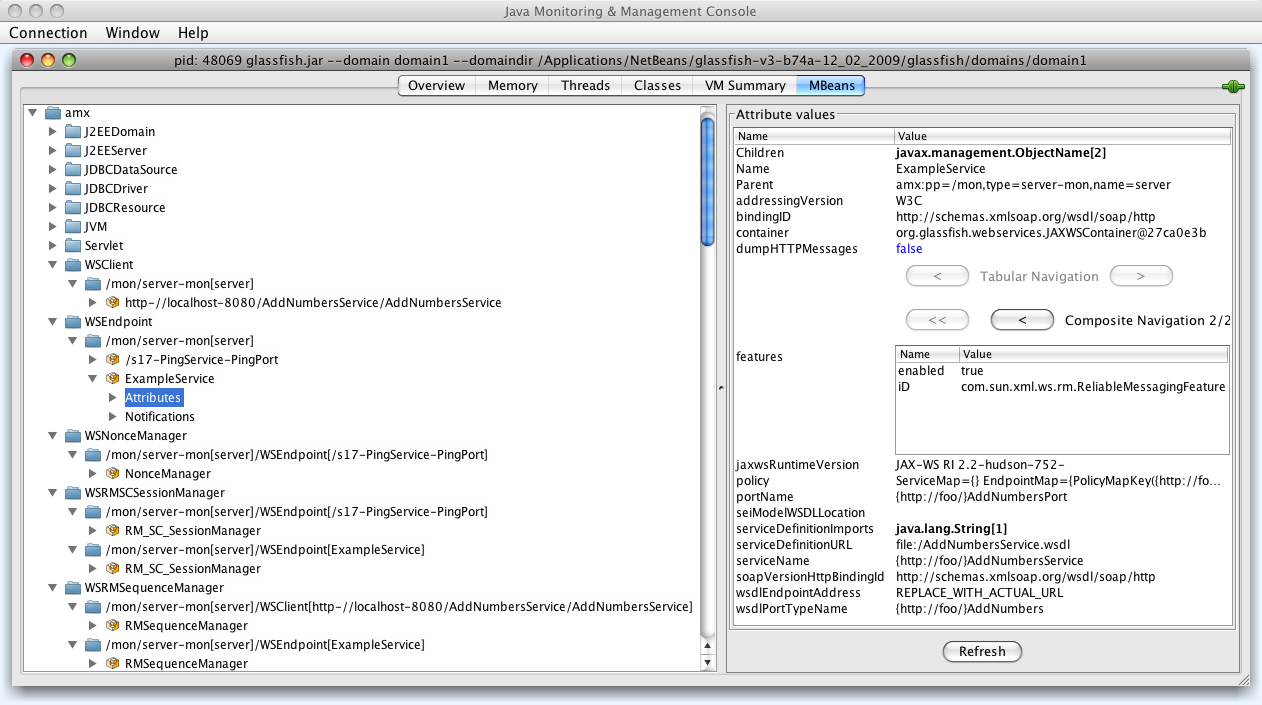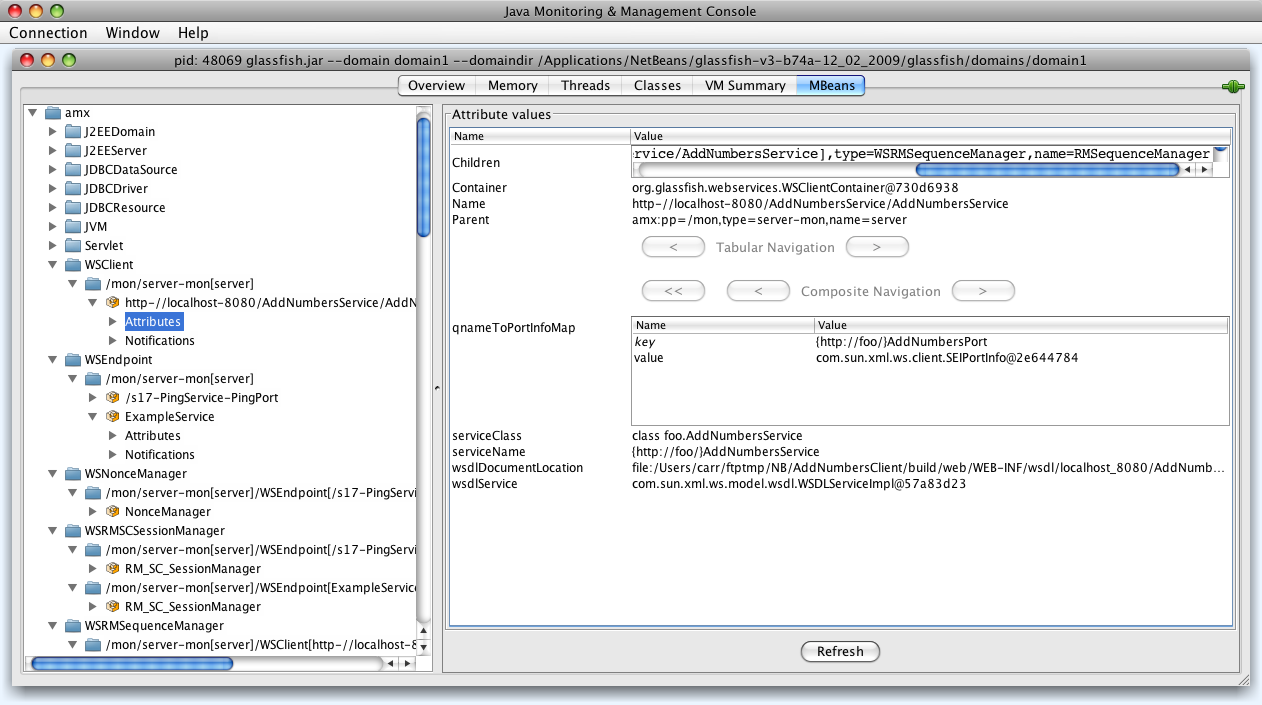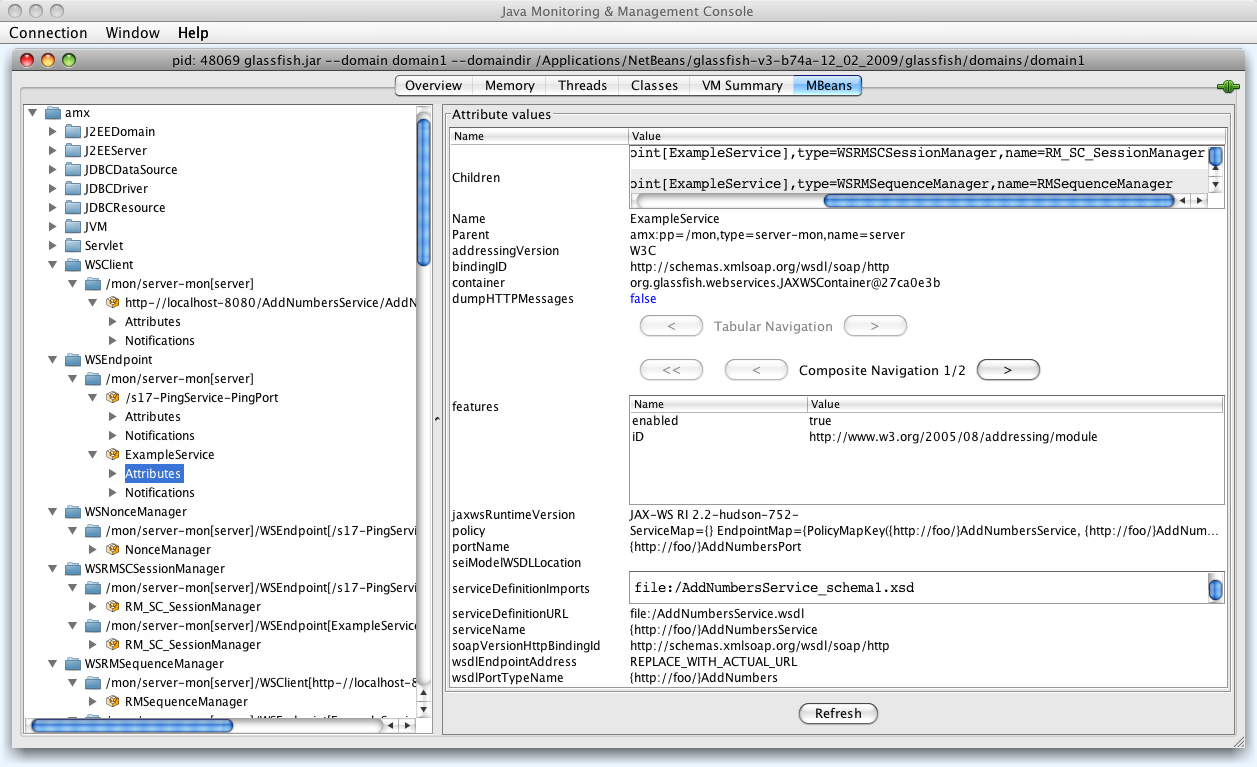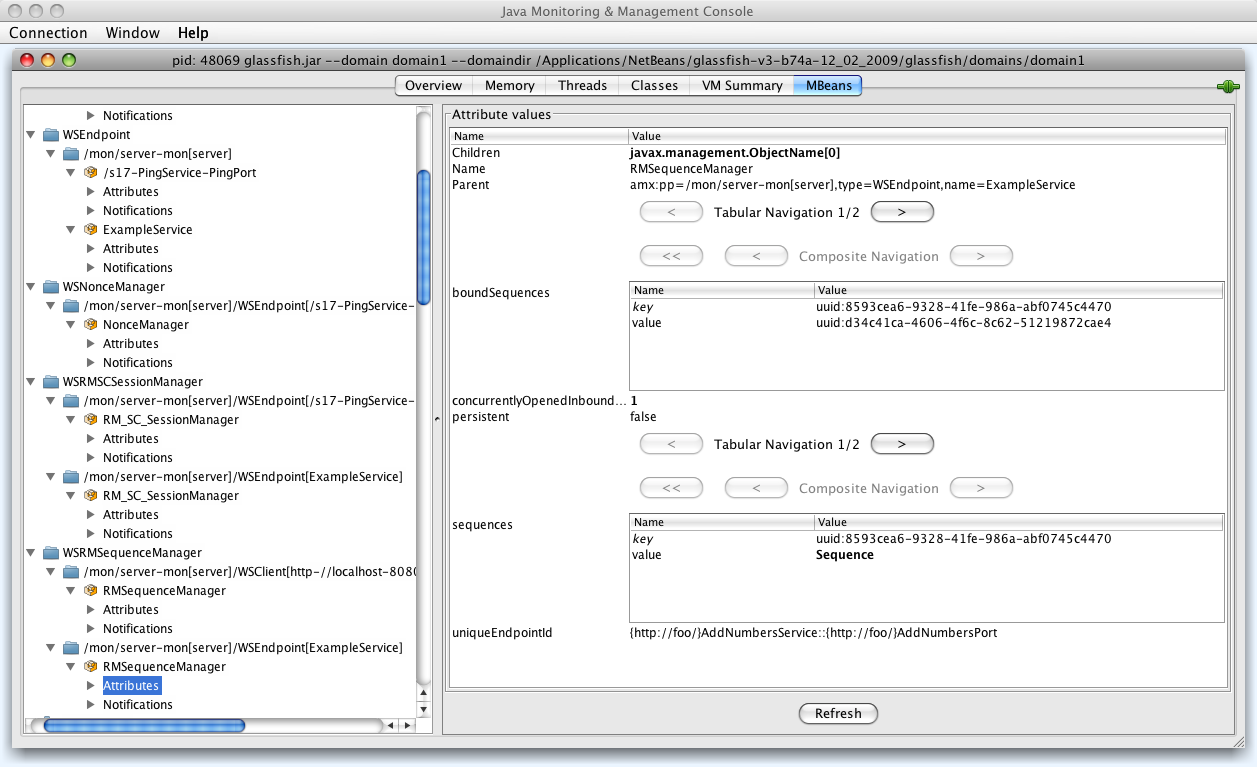java -jar <Jmxterm-jar>
Welcome to JMX terminal. Type "help" for available commands.
$>open localhost:8686
#Connection to localhost:8686 is opened
$>beans
...
#domain = amx:
amx:name=/s17-PingService-PingPort,pp=/mon/server-mon[server],type=WSEndpoint
amx:name=ExampleService,pp=/mon/server-mon[server],type=WSEndpoint
amx:name=NonceManager,pp=/mon/server-mon[server]/WSEndpoint[/s17-PingService-PingPort],type=WSNonceManager
amx:name=RMSequenceManager,pp=/mon/server-mon[server]/WSClient[http-//localhost-8080/AddNumbersService/AddNumbersService],type=WSRMSequenceManager
amx:name=RMSequenceManager,pp=/mon/server-mon[server]/WSEndpoint[ExampleService],type=WSRMSequenceManager
amx:name=RM_SC_SessionManager,pp=/mon/server-mon[server]/WSEndpoint[/s17-PingService-PingPort],type=WSRMSCSessionManager
amx:name=RM_SC_SessionManager,pp=/mon/server-mon[server]/WSEndpoint[ExampleService],type=WSRMSCSessionManager
amx:name=http-//localhost-8080/AddNumbersService/AddNumbersService,pp=/mon/server-mon[server],type=WSClient
...




